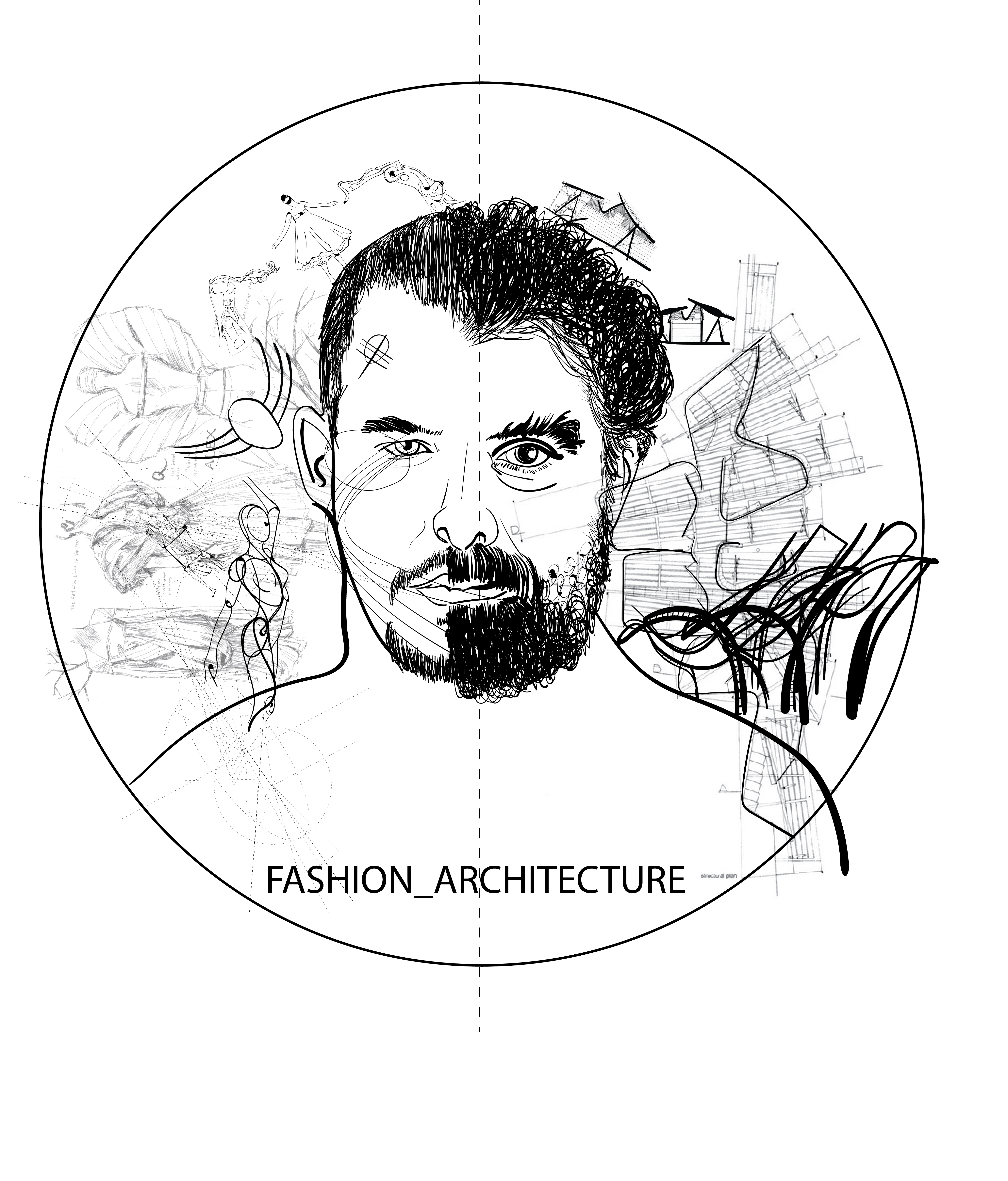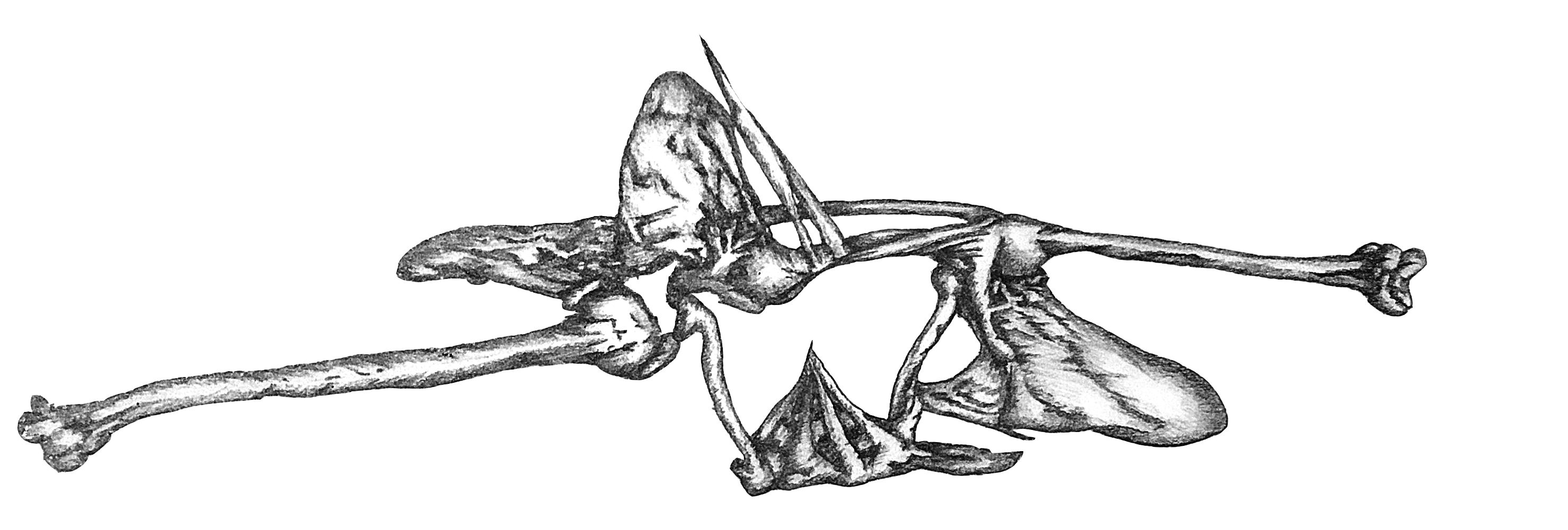Episodic Notes on the Intersections of Fashion & Architecture
Vikramaditya Prakash1.
Body_Architecture: Prolegomenon
“It is not possible to conceive a garment without the body ... the empty garment ... is death, not the body's neutral absence, but the body decapitated, mutilated.'' (Barthes, 1967).
To be, for me, is first of all to be in/of my body. To be in the world, is to be in the world in/as my body. To connect to an-other, is to attempt to connect to the experience of being in the body of that another.
Whether it is the complex firing of neurons, or the strange economy of the ego, superego, id, or of the conscious, unconscious – or, of all of the above - it seems inescapable to me that the only site I can identify as being in some way co-located with my experience of being in the world - is my body.
I realize that my coming into being in my body, in the sense of my sense of coming into consciousness as the experience of being alive in my body, is co-temporal with the equally inescapable presencing – as in the sense of impressing upon – of the external world on my coming into consciousness in my body. My coming into being is accompanied by the awareness of the externality of the world, and of the necessity of finding ways of living in this world that is fundamentally outside of me, other to me and to my experience of being. This is exotopia, in my reading of Bakhtin.
The world thus as Other to me; but also undeniable, indelibly real, in the sense of it must be real, even if unknown and unknowable. All I have of this other world, is the evidences of my senses, and my synthetic deductions, all of which accumulate in my world as assumptions about the other, unverifiable as absolute.

THE SLEEPING BODY Arjun Appadurai talks about the sleeping body, the body housed in its own skin, oblivious to the world as the primary kind of housing. This is where architecture begins.
Original photo by Amit Ittyerah.
2.
Near-Body-Architecture/Far-Body-Fashion
Fashion, the act of dressing and draping the human body has much in common with architecture. They both cater to a basic requirement of life which is also one of its most expressive gestures. i.e. to house the human body. In this sense, fashion can be said to ‘near-body-architecture’, in that fashion does everything that architecture does, only close to the body. And, conversely, by implication, architecture can be said to be ‘far-body-fashion’, in that architecture has the potential to be as expressive of the body as fashion is (although, admittedly, it rarely is any longer).
Perhaps it is a consequence of this differential distance from the body that while fashion intimately builds itself off the body, and concerns its work as fundamentally intertwined with the articulation of that body, in architecture the body tends to be held, so to speak, at an arm’s length, enveloped but with ample room to move. As architecture moves away form the body, it seems to suck the ‘juice’ out of it, its emotions, its desires, its fears, its longings. As a result, the body in architecture is approached more abstractly, via metrics such as ergonomics, proportion and comfort zones, rather than more corporeal discourses such as touch, feel, dance, emote, bleed, hurt, eroticize, ache.
Near-Body-Architecture/Far-Body-Fashion
Fashion, the act of dressing and draping the human body has much in common with architecture. They both cater to a basic requirement of life which is also one of its most expressive gestures. i.e. to house the human body. In this sense, fashion can be said to ‘near-body-architecture’, in that fashion does everything that architecture does, only close to the body. And, conversely, by implication, architecture can be said to be ‘far-body-fashion’, in that architecture has the potential to be as expressive of the body as fashion is (although, admittedly, it rarely is any longer).
Perhaps it is a consequence of this differential distance from the body that while fashion intimately builds itself off the body, and concerns its work as fundamentally intertwined with the articulation of that body, in architecture the body tends to be held, so to speak, at an arm’s length, enveloped but with ample room to move. As architecture moves away form the body, it seems to suck the ‘juice’ out of it, its emotions, its desires, its fears, its longings. As a result, the body in architecture is approached more abstractly, via metrics such as ergonomics, proportion and comfort zones, rather than more corporeal discourses such as touch, feel, dance, emote, bleed, hurt, eroticize, ache.

THE PILLOW BOOK Peter Greenaway’s film, on (sensual) writing on the skin.
3.
BODY ENONCING
Clothing, the car, the house, the city, the landscape, are all intentions to house the human body. This is of course a question of warmth and comfort. But this is just as much a question of desire, of desire and display, touching and communicating.
Clothing, and architecture, as such, begin with tattooing and make up, as projections of being, of being alive in/as the body. Living, in this sense is the psychobiographic expressing of the body-mind; and, as a part of that, clothing/architecture is the psychobiographic expressing of the body-mind. Architecture as the extension of the expression, the in habitation, of the human body in the world, rather than the autonomous object of its own accord, can be designated by the term Body-Enoncing.
Body-enoncing is Body Architecture.
Design, then, is the extended graphing of Body-enoncing. As body-enoncing, the aesthetic experience is erotic in phase; it is indexed by the mechanisms of desire. (Arousal in this sense is the touchstone experience of the aesthetic; the baseline.)
It functions through the phychobiographical layering of the mechanisms of desire, as outline by psychoanalytic theory, particularly identification, transference and sublimation.

TATTOOING: THE TATTOOED BODY
reconizes the
skin as clothing, a primary exotopic interface, alt to our other primary interfaces, our eyes, ears, nose, tastebuds.

MAKE UP temporary tattooing, usually used to express body openings.

